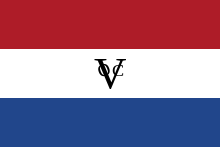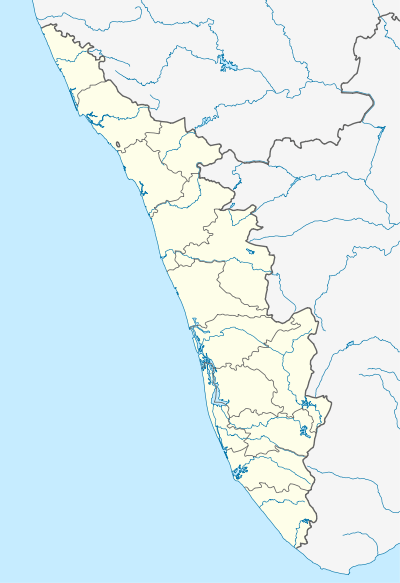Dutch Malabar
| Dutch Malabar | ||||||||||
| Dutch Malabar, Lanta | ||||||||||
| Dutch colony | ||||||||||
| ||||||||||
| ||||||||||
| Capital | Dutch Quilon (1661-1663) Fort Cochin (1663-1795) | |||||||||
| Languages | Dutch, Malayalam | |||||||||
| Political structure | Colony | |||||||||
| Commander | ||||||||||
| • | 1663-1665 | Ludolph van Coulster | ||||||||
| • | 1669-1676 | Hendrik van Rheede | ||||||||
| • | 1793-1795 | Jan Lambertus van Spall | ||||||||
| Historical era | Imperialism | |||||||||
| • | Dutch capture of Portuguese Quilon | December 1661 | ||||||||
| • | British annexation of Malabar | 1795 | ||||||||
| ||||||||||

Dutch Malabar, also known by the name of its main settlement Cochin, was the title of a commandment of the Dutch East India Company on the Malabar Coast between 1661 and 1795, and is part of what is today collectively referred to as Dutch India. Dutch presence in the region started with the capture of Portuguese Quilon, and ended with the occupation of Malabar by the British in 1795.[1] They possessed military outposts in 11 locations: Alleppey, Ayacotta, Chendamangalam, Pappinivattom, Ponnani, Pallipuram, Cranganore (from 15 January 1662), Chetwai, Cannanore (from 15 February 1663), Cochin (7 January 1663 – 1795), and Quilon (29 December 1658 – 14 April 1659 and from 24 December 1661).
The Dutch virtually ruled Malabar for a period of over 130 years, and forced the rulers of Malabar to agree monopolistic contracts with them for pepper and cinnamon. The Kingdom of Cochin was under the complete influence of the Dutch and the king was a mere puppet of the Dutch East India Company. They enlarged the Royal Palace built by the Portuguese at Mattancheri for the King of Cochin, which from then on became known as the "Dutch Palace". In 1744, an impressive country house, later called Bolgatty Palace, was erected on Bolghatty Island for the Dutch Governors.
The Dutch contributed a monumental work called Hortus Indicus Malabaricus on the medicinal properties of Malabar plants. In Cochin, the Dutch established an orphanage for poor European children and a leper asylum on Vypin.
History

Background
Although also motivated by the lucrative pepper trade on Malabar, the primary aim for the Dutch in capturing the coast from the Portuguese was to secure Dutch Ceylon from Portuguese invasions. After failed attempts to capture the main Portuguese fort of Goa in 1604 and 1639, the Dutch decided to aim for the secondary Portuguese trading posts on the Malabar Coast.
Dutch capture of Quilon
In 1650s the Dutch possessed only the unfortified factories at Kayamkulam and Cannanore. They took Quilon (now known as Kollam) on 29 December 1658, but it was reconquered by the Portuguese on 14 April 1659. On February 10, 1661 the Dutch commander of Ceylon, Adriaan van der Meyden, came to Malabar with the intention of displacing the Portuguese, and at Ayyacotta he had an interview with the Calicut prince. It was agreed that Calicut, the most powerful ruler in Malabar and an enemy of the Portuguese, was to conduct an attack on the Portuguese fort at Cranganore by land backed up by the Dutch Navy. According to the treaty between the two parties, Fort Cranganore was to be made over to Calicut after its successful capture. Van der Meyden dispersed a Nair detachment sent to stop his advance on the way and appeared before Fort Palliport on February 16 1661. The Portuguese made no attempt to resist and fled by the backwaters.
On March 21, Rijckloff Van Goens signed a treaty with the local chief of Paliyam on a ship anchored off the coast. Dutch forces soon landed and attacked the palace of the queen at Mattanceri. Subsequently, the queen was taken as a prisoner. Later in December 1661, Portuguese Quilon was captured by a Dutch expedition under Rijckloff Van Goens. This is often regarded as the beginning of the Dutch presence in Malabar.

On January 3, 1662 Van Goens was joined by the Calicut army in a siege of Fort Cranganore in the tropical heat. After a fortnight, the fort surrendered (15 January), and the Dutch demolished the structure with the exception of the bastion, where they stationed a garrison. A new treaty was now signed between Calicut and Van der Meyden. Calicut agreed to cede Fort Cranganore and Vypin to the Dutch after the capture of the Portuguese fort at Cochin.
Capture of Cochin
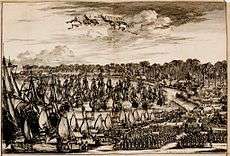
The allies moved towards Cochin and marched upon the palace of the Raja on 5 February 1662. The raja was killed in the subsequent battle along with two of his juniors. The Dutch installed another prince on the throne and proceeded to besiege the Portuguese fort. Cochin and the chief of Paliyam provided supplies to the Dutch, who faced heroic Portuguese resistance during the prolonged siege. The Native rulers of Porca and Cembakasseri kept the besieged supplied with provisions. Though disrupted by monsoon rains and the deaths of the ruler of Calicut and important Dutch officers, the garrison finally capitulated on January 8, 1663. The terms of the capitulation were that all the unmarried Portuguese residents were returned to Europe, and all married Portuguese and Mestiços were transferred to Goa. The last governor of Portuguese Cochin was Inácio Sarmento. It was said that about four thousand people were banished and decades of Portuguese supremacy in Malabar came to an end. Fort Cochin now became the primary trading post of the Dutch colony.
Battles for supremacy on Malabar
.jpg)

The alliance between Calicut and the Dutch had no chance of crystallizing into a long lasting friendship. The Zamorin of Calicut had sought Dutch cooperation so that he might once more recover his hold on the Cochin Raja (before the Portuguese arrival, Cochin was his vassal state). Hence his stipulation for the cession of Vypin and reduction of the Cochin Raja to the position of a Calicut tributary in the treaty of 1662. But the Dutch, having established themselves in Cochin and Calicut, asked them to fulfill their treaty obligations.
It was in these circumstances, Calicut welcomed the British and allowed them to establish a factory at Calicut in 1664. The Dutch authorities in Amsterdam were alarmed and wrote to their officers in India to "spare no pains" to secure the expulsion of the British from Calicut. The Dutch carried off four or five guns from Calicut and attacked Cranganore. The Dutch at once summoned their allies, Cochin, Thekkumkur, Vatakkumkur, Paravur, Chempakasseri and Mangatt. Calicut forces, including Moplahs and supported by a Portuguese named Pacheco, were at first successful. After a year of desultory fighting the Calicut forces withdrew, and the Dutch destroyed the Fort Round and built a bastion near Cranganore.
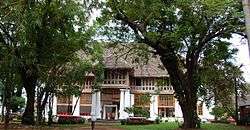

In 1669, Dutch Malabar became a separate commandment of the Dutch East India Company (VOC); beforehand it had been governed from Batavia.[1] In 1670, the Zamorin of Calicut ruler was persuaded by his prince to go to Cranganore to encourage the Nairs. But, the Dutch made a surprise attack on the Zamorin's camp. Thirty Dutch lost their lives this raid, and in the confusion of the battle the Royal Sword of Calicut was destroyed. The Calicut ruler fell back to Papinivattom, and the prince attacked the bastion and captured it. In 1673, VOC representative Hendrik van Rheede came to Cochin as its Commander. He re-occupied the bastion, and demanded the cession of Chetwai - the route to Cochin from Calicut. He came to Port Ponani in 1678 and met with the Calicut ruler. Tired of the hostility shown by most of the natives, the Dutch opened negotiations with Calicut. The Commissary General of Batavia, the head of the Dutch Government in the East Indies, came to Ponani in 1696 without even stopping at Cochin. In the meantime, Calicut formed a large anti-Dutch alliance and signed a new treaty with the English. In the following years, they made raids deep into Cochin areas (1701–1710). The Dutch were forced to take part in these battles with Cochin and began to construct a fort for the security of Chetwai. Soon, Calicut sent a force to pull down the fortifications and expelled the Dutch from Chetwai (1714). The Chief of the English factory had a great hand in promoting this. Calicut resolved to follow up this success by attacking Cranganore and Pappinivattom. But, the Dutch under Councillor William Bucker Jacobs retaliated by defeating the Calicut and English armies and on April 10, 1719 the Dutch formally took command of Fort William, as the fort at Chetwai was called then. This Dutch victory was a heavy blow to the English and Robert Adams.
The Dutch gradually began to consider their forts and garrisons in Malabar an economic burden, while British East India Company dominance of commerce in Malabar increased. On September 10, 1691 the Dutch transferred Chetwai back to Calicut and reduced the size and strength of their forces across Malabar. The fear of Dutch forces in the minds of the native rulers began to fade. In 1721, the supreme council of the Dutch East Indies in Batavia agreed that it would no longer support its unfortunate native ally Cochin against Calicut.
Defeat against Travancore and Kew Letters
The Dutch never succeeded in establishing a pepper trade monopoly in Malabar, and were all the more frustrated in their attempts when the young ruler of Travancore, Marthanda Varma, started to expand his kingdom. The Travancore–Dutch War that followed culminated in the Battle of Colachel, which proved disastrous for the Dutch. Eustachius De Lannoy, a naval commander in the Dutch army, was taken prisoner and subsequently became a commander in the Travancore army. De Lannoy later helped Travancore to establish an organized army, introduce better firearms and artillery and to build European style forts in his state.
As a result of the Kew Letters, Dutch settlements on the Malabar Coast were surrendered to the British in 1795, in order to prevent them being overrun by the French. Dutch Malabar remained British after the conclusion of the Anglo-Dutch Treaty of 1814, which exchanged the colony for Bangka Island.
Forts and trading posts
| Settlement | Type | Established | Disestablished | Comments |
|---|---|---|---|---|
| Fort Cochin | Fort and factory | 1663 | 1795 | Established by the Portuguese as their first settlement in India. Captured by the Dutch in 1663, who made it the capital of Dutch Malabar (the residence of the Commander). During the Dutch occupation of Cochin they made several changes in the city. The Dutch reduced the area of the old Portuguese town, reduced the fort and destroyed most of the public buildings built by the Portuguese. They developed the harbour, the piers, many merchants’ houses and warehouses in Cochin. |
| Fort Cranganore | Fort | 1662 | 1770 | Cranganore was a little city with a small fort, but the place was of major strategic importance; it was "the key" to Cochin. Fell under the command of Fort Cochin and meant to protect the latter. In 1662, the formerly Portuguese fort was first given back to the Zamorin of Calicut as a reward for his alliance with the Dutch, but in 1666 the Dutch started to renovate the dilapidated fort for their own purposes. |
| Fort Pallipuram | Fort | 1661 | 1789 | Fell under the command of Fort Cochin and meant to protect the latter. Sold to the Kingdom of Travancore in 1789. |
| Purakkad Factory | Factory | 1662 | ? | Fell under the command of Fort Cochin. |
| Fort Quilon | Fort and factory | 1661 | 1795 | Quilon was a fortified city. The first Portuguese fort to be captured by the Dutch in December 1661. Capital of Dutch Malabar until the capture of Cochin in 1663. |
| Kayamkulam Factory | Factory | 1661 | ? | Fell under the command of Fort Quilon. |
| Fort Cannanore | Fort and factory | 1663 | 1790 | Cannanore was a city with a good harbour and a strong stone fort. Captured on 15 February 1663 from the Portuguese. |
| Vengurla Factory | Factory | 1637 | 1693 | Established before the establishment of the Malabar commandment to spy on the nearby Portuguese settlement of Goa. Fell directly under the command of Batavia until 1673, and then under command of Suratte. From 1676 onwards, the command was with Dutch Malabar. |
| Barselor Factory | Factory | 1667 | 1682 | Established by treaty with the local ruler. The unreinforced factory traded in rice and pepper, and was closed in 1682 after problems with local merchants. |
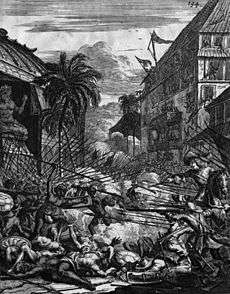
Religious policy
Unlike the Catholic Portuguese, the Protestant Dutch did not try to convert indigenous Hindu peoples to Christianity. However, they helped the Saint Thomas Christians of Malabar, who had been around there since the 8th century, against the pressure of the Roman Catholic Church. They also tolerated the Malabari Jews, and provided asylum. A few families of Sephardic Jews, who had immigrated to the Netherlands after expulsion from Spain and Portugal, also came to Cochin and settled there during Dutch rule.
Dutch Occupation of the Thiruchendur Temple
The Murugan temple at Thiruchendur was occupied by the Dutch East India company between the years 1646 to 1648, during the course of their war with the Portuguese. The local people tried during these 2 years to try and free their temple, with several futile attempts. The Dutch finally vacated the temple on orders from the Naik ruler. However, while vacating the temple, they hacked away and removed the idol of the main deity of the temple, and took it back to Galle, Dutch Ceylon. The idols was returned after many negotiations with the Madurai Nayakar.[2]
Commanders of the Dutch Malabar
Dutch Malabar was one area of the Dutch East India Company (Vereenigde Oost-Indische Compagnie or VOC in Dutch) ruled by a commander. This is a list of commanders.
- apr-nov 1663 Pieter de Bitter / Cornelis Valkenburg
- 1663–1665 Ludolph van Coulster
- 1665–1667 IJsbrand Godske(n)
- 1667–1669 Lucas van der Dussen
- 1669–1676 Hendrik van Rheede
- 1676–1678 Jacob Lobs
- 1678–1683 Marten Huysman
- 1683–1687 Gelmer Vosburgh
- 1688–1693 Isaac Dielen
- 1693–1694 Alexander Wigman
- 1694–1696 Adriaan van Ommen
- 1697–1701 Magnus Wichelman
- 1701–1704 Abraham Vink
- 1704–1708 Willem Moerman
- 1708–1709 Adam van der Duijn
- 1709–1716 Barend Ketel
- 1716–1723 Johannes Hertenberg
- 1723–1731 Jacob de Jong
- 1731 Wouter Hendriks
- 1731–1734 Adriaan Maten
- 1734–1742 Julius Valentyn Stein van Gollenesse
- 1742–1747 Reinierus Siersma
- 1747–1751 Corijn Stevens
- 1751 Abraham Cornelis de la Haye
- 1751–1756 Frederik Cunes
- 1756–1761 Casparus de Jong
- 1761–1764 Godefried Weyerman
- 1764–1768 Cornelis Breekpot
- 1768–1770 Christiaan Lodewijk Senff
- 1770–1781 Adriaan Moens
- 1781–1793 Johan van Angelbeek
- 1793–1795 Jan Lambertus van Spall
Sources
"Malabar" (in Dutch). De VOCsite. Retrieved 22 January 2013.
See also
Notes
References
| Wikimedia Commons has media related to Dutch rule in India. |
- Iyer, K. V. Krishna "Zamorins of Calicut: From the earliest times to A D 1806". Kozhikode: Norman Printing Bureau, 1938
- Baldaeus, Philip "A Description of East India Coasts of Malabar and Coromandel and also of the Isle of Ceylon" 360 pp. maps, Reprint of the 1703 edition, Asian Educational Services, 1996, New Delhi-Madras, India. Translated from High Dutch in 1672.
- Koshy, M.O. "The Dutch power in Kerala 1729-1758" 334 pp. 2 maps Mittal Publ. 1989, New Delhi, India.
- Menachery,George (Ed.) The St. Thomas Christian Encyclopaedia of India, Vols. I(1982), II(1973), III(2009), Trichur & Ollur.
- Meyer, Raphael "The Jews of Cochin" Internet article American Asian Kashrus Services, 1995
- Poonen, T.I. "Dutch hegemony in Malabar and its collapse 1663–1795" 238 pp. Department of Publications, University of Kerala, 1978, Trivandrum, India.
- Ramachandran, Vaidyanadhan "Communication History of the Dutch in India" 46 pp. Artline Printers, 1997, Madras, India.
